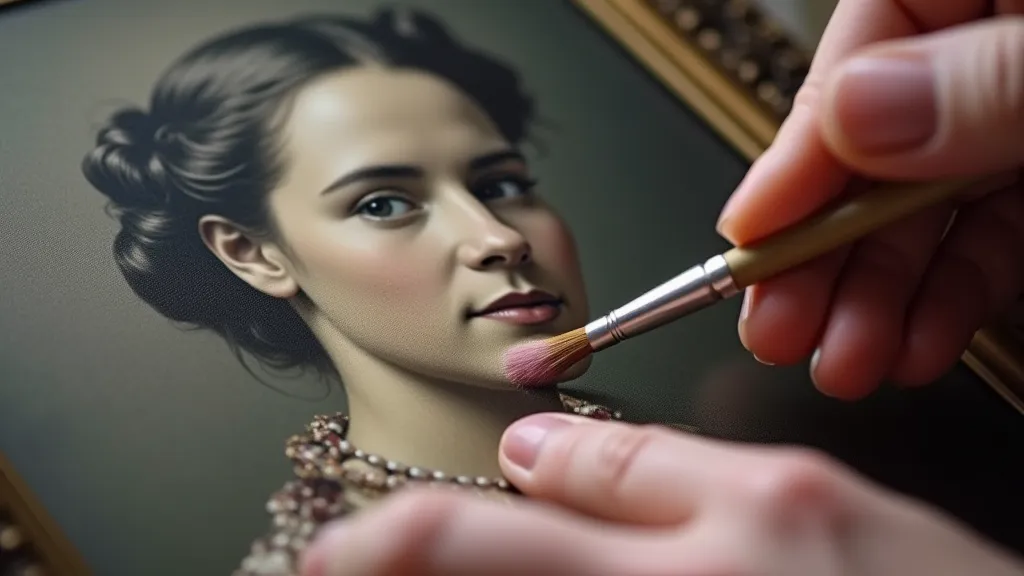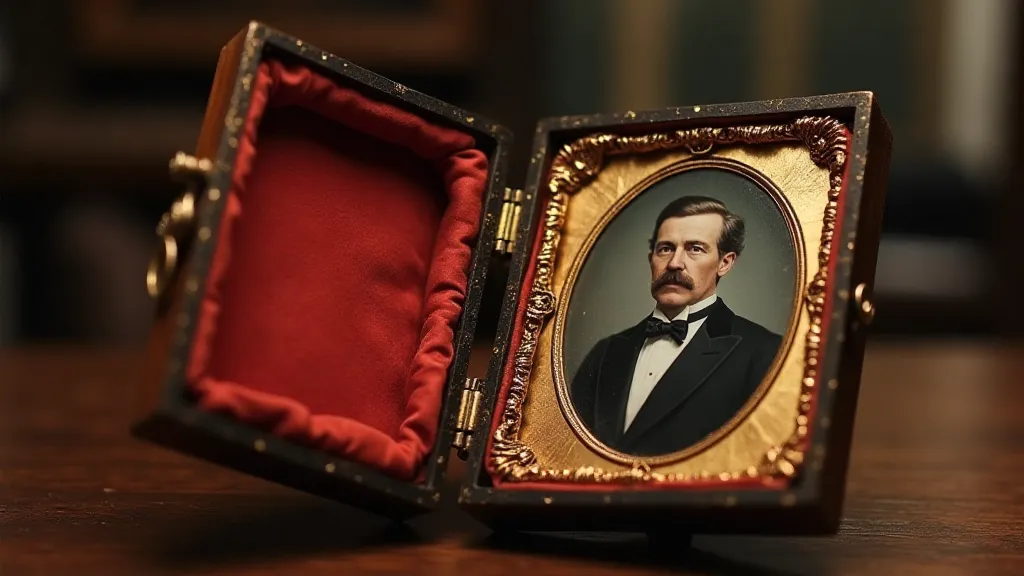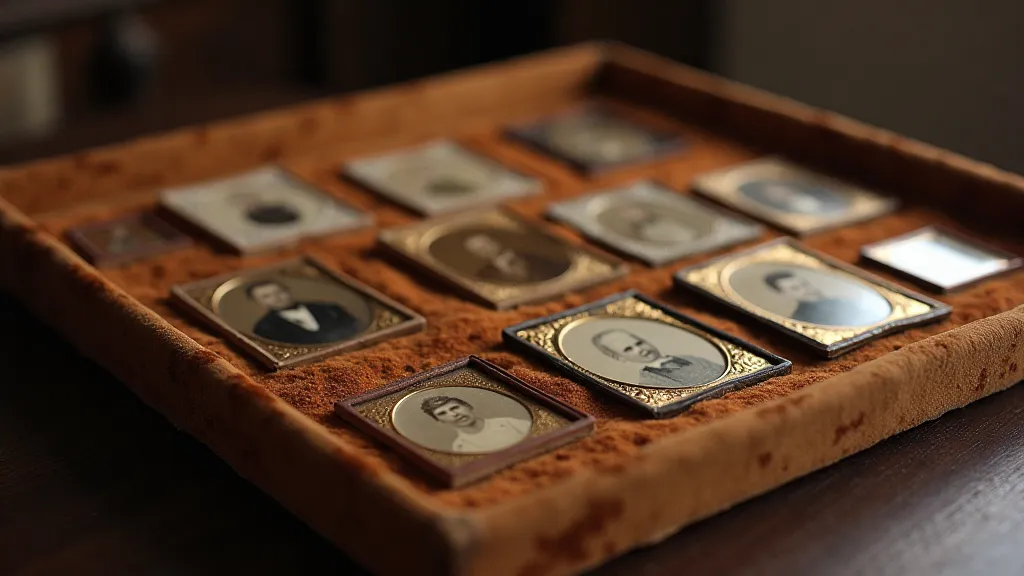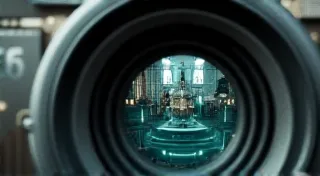Ghosts in the Spectrum: The Ethereal Quality of Tinted Daguerreotypes
There’s a profound stillness that clings to a daguerreotype. A captured moment, frozen in silver and mercury, reflecting not just a likeness but a fragment of a life lived in a world almost unimaginable to us now. But imagine, if you will, that this monochrome echo isn’t quite so stark. Imagine a breath of color breathed into that stillness, a faint blush on a cheek, a glimmer of emerald in an eye. This is the magic of tinted daguerreotypes, a lost art that sought to inject a soul back into the silvered surface, creating something more than just a portrait – a fleeting, ethereal presence.
My own fascination with these tinted portraits began not with a technical understanding, but an emotional one. Years ago, while browsing an antique shop in a quiet corner of Vermont, I stumbled upon a small, intricately carved rosewood case. Inside nestled a daguerreotype of a young woman, her face painted with the faintest rose on her lips and a gentle lavender hue in her cheeks. It wasn't a vibrant, modern colorization. It was subtle, almost dreamlike. The effect wasn't about recreating reality; it was about elevating it, about hinting at an inner life, an unspoken story. It was haunting.
The Dawn of Color and the Limits of Silver
The daguerreotype, invented in 1839, was a revolutionary achievement. It captured unprecedented detail, a window into the Victorian era. However, the inherent limitations of the process – the monochrome nature of the image – left many yearning for a more complete representation. While photographers experimented with various techniques to mimic color—using toners, dyes, and even cleverly positioned filters—none could truly replicate the richness and vibrancy of a painted portrait.
Enter the tinting process. This wasn’t photography as we understand it today; it was a fusion of art and science. Typically, a skilled artisan, often a talented artist working alongside the photographer, would apply thin washes of aniline dyes to the silver surface using fine brushes or cotton swabs. Aniline dyes, derived from coal tar, had become readily available in a range of colors during the mid-19th century, offering a palette previously unavailable for photographic manipulation.

Beyond Likeness: The Language of Color
The reasons for tinting were complex, a mixture of artistic ambition and consumer demand. While some sought a more realistic representation, the most common application was to enhance the emotional impact of the portrait. Color wasn’t used to slavishly recreate what the subject *actually* looked like, but to convey a desired impression. A flush of rose on the cheeks could signify health and vitality, while a touch of blue could convey melancholy or introspection. Certain colors also held symbolic weight. Red might suggest passion or strength, while green could evoke nature and tranquility.
The choices were subtle, yet potent. The most common areas for tinting were the lips, cheeks, and eyes. A carefully applied stroke of crimson could transform a simple portrait into a captivating study of character. These weren’s mere cosmetic adjustments; they were carefully considered artistic decisions, revealing a deep understanding of psychology and the power of visual cues.
The Craftsmanship: A Lost Art Form
The process itself was incredibly delicate and required immense skill. The silver surface of a daguerreotype is fragile and easily damaged. A heavy-handed application of dye could irreparably mar the image. Moreover, the dyes themselves were often unstable and prone to fading or discoloration over time, contributing to the rarity of well-preserved tinted daguerreotypes today.
The artists who performed these tintings – often nameless, their contributions lost to history – possessed a unique blend of photographic knowledge and artistic talent. They understood the nuances of the daguerreotype process and the chemistry of the dyes, combining technical expertise with a keen eye for color and composition. Their names are rarely recorded, their skill dismissed as a mere ‘finishing touch’ to the photographer’s work, but their contribution was crucial in shaping the visual language of Victorian portraiture.
Even the cases themselves are remarkable feats of craftsmanship. Often made of intricately carved rosewood or ebony, these cases were designed to protect the fragile daguerreotype within. The interiors were often lined with velvet or satin, further enhancing the sense of luxury and reverence surrounding the image.

Collecting and Preservation: Echoes of a Bygone Era
Today, tinted daguerreotypes are highly prized by collectors. Their rarity, coupled with the sheer artistry involved, makes them valuable historical artifacts. However, preserving these fragile images is a constant challenge. Light, humidity, and improper storage can all contribute to their deterioration. Careful handling and archival-quality storage are essential for ensuring their survival for future generations.
When examining a tinted daguerreotype, look beyond the initial impression. Pay attention to the subtlety of the coloring, the way the colors interact with the silver surface, and the overall composition of the image. Notice the texture of the silver, the way it reflects light, and the sense of depth that the tinting helps to create. It’s not merely a photograph; it’s a testament to human ingenuity, artistic skill, and a longing to capture something more than just a likeness.
The condition of the case is also important. A well-preserved case not only protects the daguerreotype but also provides valuable clues about its history and provenance. Researching the photographer and the artist who tinted the image can often shed light on the social and cultural context in which it was created.

More Than Just a Portrait
The tinted daguerreotype is more than just a portrait; it is a window into the Victorian era, a tangible link to a time when artistry and science converged to create something truly remarkable. It's a reminder that even in an age of technological innovation, the human desire to capture beauty, emotion, and the essence of the individual remains a constant. These aren’t just images; they’re whispers from the past, ghosts in the spectrum, waiting to be rediscovered.





